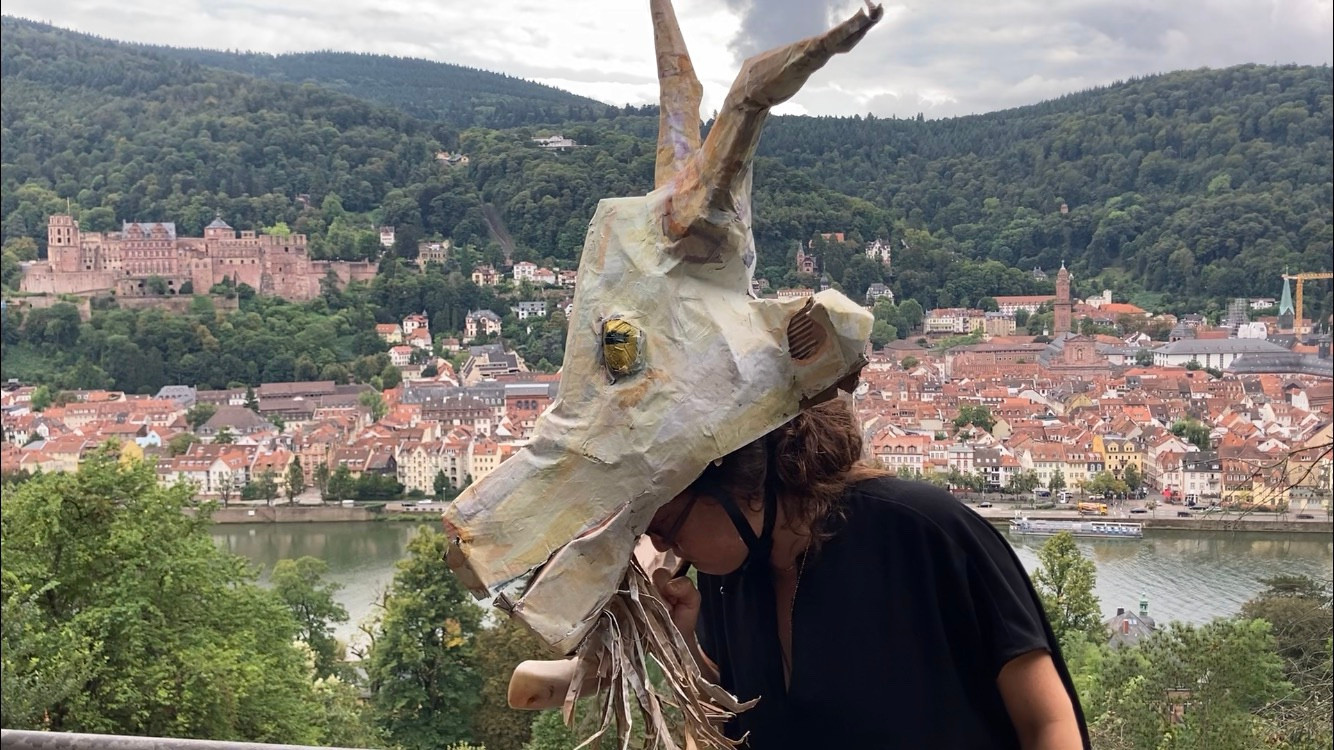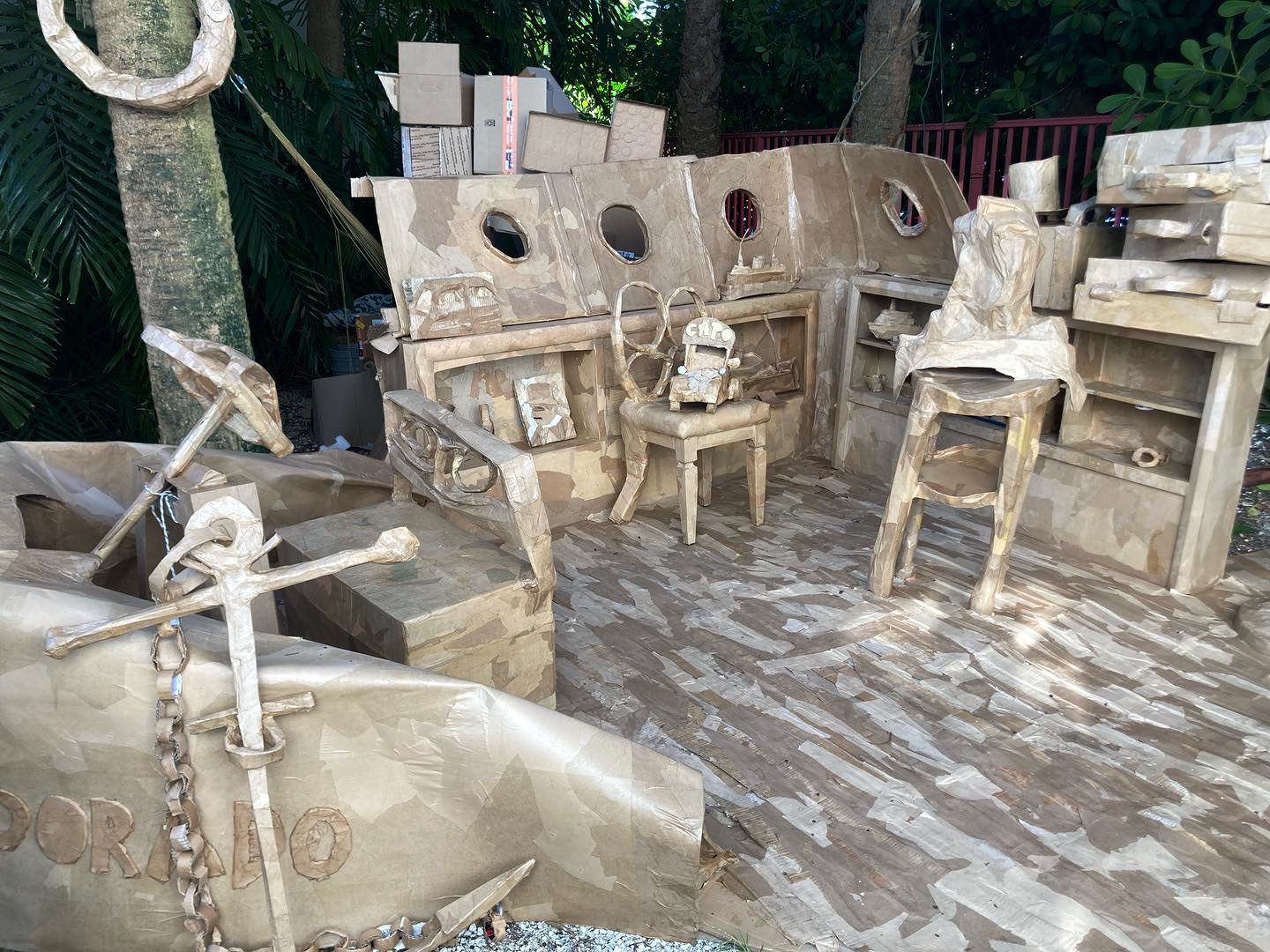Meet Ali Shrago-Spechler | Artist and Educator

We had the good fortune of connecting with Ali Shrago-Spechler and we’ve shared our conversation below.
Hi Ali, how has your work-life balance changed over time?
When I was living in NYC (2007-2020), finding a work-life balance was increasingly difficult. As an artist working within the non-profit realm, I had to balance multiple jobs in order to pay rent for my cost of living- and studio space is not cheap in New York. There were times I would work three or four different positions and was simply too tired to produce at the end of the day. Eventually, my husband and I decided to find an apartment with a basement that could function as my studio. This allowed me to create without the stress of commuting after a long day of teaching. This was extraordinarily helpful and gave me the time and space to allow my practice to flourish. During 2021, I was on a Fulbright Research Grant in Karlsruhe, Germany investigating open-air theaters built by the Third Reich as part of a propagandistic theatrical, architectural and political movement. Though short-lived (1933-35), the movement resulted in over 60 stages throughout Germany, Russia and Poland. The pandemic kept me from creating the large, interactive performances that I had planned. I pivoted and invested a lot of time into site visits, exploring museums, archives, Jewish cemeteries and working on exhibitions throughout the country. The relationships and new perspectives that I initiated during this time became extremely valuable to my practice and the performances that I ultimately developed there. The act of making is an imperative part of working as an artist, but so are the experiences that lead to new and more challenging ideas.


Let’s talk shop? Tell us more about your career, what can you share with our community?
I am a Fulbright Scholar and practicing artist and educator with degrees from Pratt Institute and the School of Visual Arts in New York and recipient of the Naomi Anolic Emerging Artist Award. As an educator, I’ve worked in museums, schools and libraries (shoutout to ProjectArt Crown Heights Library!) Through mapmaking, internal and external research and play, I encourage my students to mine their own memories, investigate their identities and their attachments to the surrounding landscapes, street names, storefronts, and memorials while learning to take responsibility for telling their own story. I encourage them to investigate ideas thoroughly before accepting them as truth.
With a sentimental and sensory approach, my installations and performative social actions address the malleability of history and imagined community. I make paintings, sculptures, installations and interactive events to create a familiar and strange space for my audience. My hybrid actions explore the comedy, violence and nuance of Jewish history while encouraging viewers to question their own narratives and the source and effect of memory. By occupying established traditions and symbols, my multidisciplinary works merge fact and fiction into a new narrative that maintains cultural cues while revealing and celebrating the absurd. Signifiers from a capitalist popular culture are combined with religious iconography and ritual which reflects a bizarre integration of social practices. I contextualize these symbols to examine the contrasting structures that root us in our affiliations, languages and lifestyles.
In 2014, I founded an annual participatory party series called A Whole New Megillah (AWNM) that co-opts the Jewish holiday of Purim. It features interdisciplinary installation and performance and encourages collaboration across medium and practice. The canonical story of Purim arguably has little historical foundation. It commemorates the deliverance of the Jewish people in the ancient Persian Empire, where a conspiratory plot had been formed to destroy them. It has since become an annual tradition to get drunk beyond recognition, dress as your enemies and retell the story of Purim in the form of a play, or spiel. AWNM recontextualizes this ancient ritual to explore its universal themes of power, abuse, assimilation, collective punishment and the ambiguity of good and evil. I try to perform some iteration of this series regardless of where I am in the world. This past year, I performed in Karlsruhe’s Schlossgarten.
My interest in and continued investigation of the spiel led me to the study of Yiddish Theatre and consequently the German Thingspiele movement of 1933-35– the framework for my investigation in Karlsruhe and recent performances throughout Germany. As a descendant of German-Jewish refugees and Holocaust survivors, I began my research as an inquiry into Period Rooms- as a way to access my own family’s unspoken history. I began to imagine connections my ancestors had with the Thingspiele movement. This grew into a larger interest in the artistic networks and utopian ideas that fed the movement’s foundation and the complex societal developments that resulted from a culture of remembrance in both Jewish and German societies.
I work primarily in recycled cardboard and papier-mache. I’m really attracted to cardboard for its symbolism of transience and movement. Cardboard is a vessel for objects and memory but it is a step removed from embodiment. This reflects the distance I feel, grasping at archives and oral histories to recreate physical objects and places that I can never see. Cardboard also encourages child-like exploration and invites the audience to physically engage with the space and history. The ubiquity and monotony of the material allows the audience to project their own personal narratives onto the installations.
My newest project, “Always a View”, is an immersive installation for Young At Art Museum’s YAA on the GO outreach van. I’ve converted the van into a cardboard installation that references the 1930s Art Deco Jewish hotels of Miami Beach which my maternal ancestors frequented and worked within when they first migrated down to South Florida. The intention is to have the work expanded and completed by community interaction.
The authenticity of a representation, retelling, or memorial is proven not only by accurate data but by the manipulation of the nameless moments that occur between memory and reality. To construct a didactic and convincing atmosphere for my audience, it is necessary to research not only the archives, but also the myths- hopefully revealing ways in which we can authentically (or alternatively, fictitiously) represent history and memory within remembrance tourism.


If you had a friend visiting you, what are some of the local spots you’d want to take them around to?
One of my favorite places in the world is Downtown Hollywood. There is so much to enjoy there like the murals by local and international artists including Nice n Easy, Milagros and Kenny Scharf. The Arts Park is gorgeous and has really unique playground structures for kids and adults alike- they also host fun concerts and art events. I love walking down Hollywood boulevard. Each restaurant and/or bar plays competing music that makes up this beautiful cacophony of cultural expression. Hollywood’s Art and Cultural Center is a hidden gem with fantastic exhibitions in a beautiful and historical building. There is also a very cheap trolly (the Sun Shuttle) that takes you east on the boulevard to Hollywood Beach. If you have kids, I’d be remiss to not mention Young At Art Museum in Broward Mall. Beyond that, Miami is home to some incredible museums. I love the Jewish Museum (shoutout to Luna Goldberg, their Education Manager and a talented curator in her own right) and the Perez Art Museum Miami. I currently work as a teaching artist at PAMM and feel honored to be surrounded by their collection which focuses on artists from Latin, Caribbean and African Diasporas.


Shoutout is all about shouting out others who you feel deserve additional recognition and exposure. Who would you like to shoutout?
In terms of organizations, my mother Mindy Shrago (who is an INCREDIBLE ceramicist) put her art career to the side in order to establish the Young At Art Museum (YAA) with my grandmother Esther Shrago while I was still in her womb. (I am currently 38 weeks pregnant and admire my mother’s strength and passion more than ever.) YAA is a children’s art museum that has served the South Florida community for over 33 years. I credit these inspiring matriarchs and YAA for having grown up immersed within the values of art, creativity and community. I spent my formative years in YAA classrooms, exhibitions and eventually worked as a volunteer and teacher there. There truly was no separation between art and life throughout my childhood and into adolescence. My mother recently handed the torch over to YAA’s current Director, Marie Berlin, and has been able to return to her ceramic practice full-time. You can check out her work at www.mindyshrago.com.
Another inspiring creative is author, artist and illustrator Nora Krug. Her work, specifically “Heimat” (or “Belonging” in English) masterfully combines history with personal narrative. She was also a recipient of a Fulbright Grant and connected me to the Karlsruhe Jewish community before I began my research there.


Website: www.alispechler.com
Instagram: https://www.instagram.com/ali.shrago.spechler/
Youtube: https://youtu.be/kkktddsWouE
Image Credits
Carl Gunhouse Tobias Hübel
